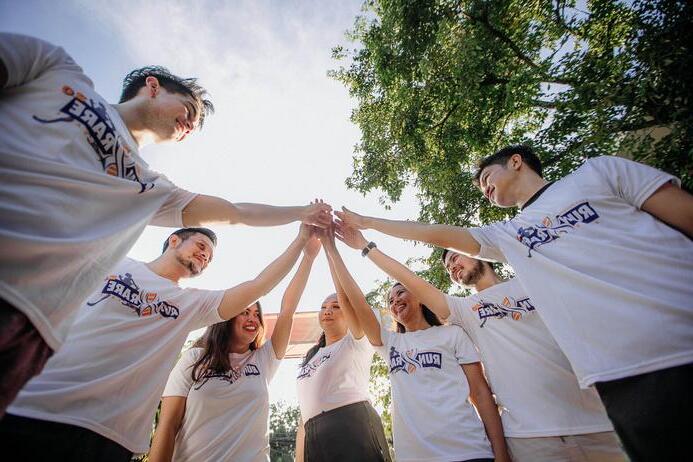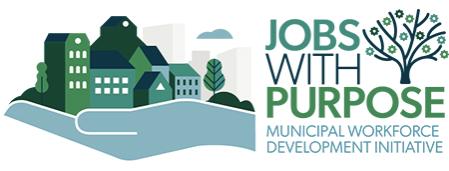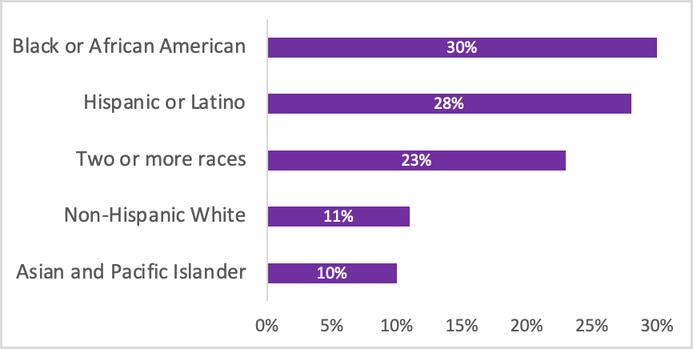POVERTY
A GUIDEBOOK FOR CITY LEADERS IN GEORGIA









2023
What is poverty? Health
Education
Social Capital
Employment & Job Training
Inequality & Economic Mobility Chapters
Housing & Homelessness
Transportation Children & Families I IV II V III VI VII VIII IX
I.We all know poverty when we see it...but what is poverty?
Poverty is not just the inability to provide for the necessities of life, but it is also the denial of choices and opportunities.
Poverty manifests as the lack of basic capacity to participate effectively in society.
13.3%
of all Georgians live below the federal poverty line
Who lives below the poverty line in Georgia?
30% of single-parent families
10% of seniors
15% of women
19% of children
FEDERAL POVERTY LINE (2022) Individual Family of 2 Family of 3 Family of 4 $13,590 $18,310 $23,030 $27,750
(Annual Income) 1
Cycle of Poverty

Children born into poverty have to overcome enormous odds to improve their economic situation. They often do not have access to:
Quality education
Job opportunities
Essential healthcare
Wealth from prior generations
Connections
This guidebook will provide context to all these challenges and offer tools for municipal leaders to tackle these issues in their communities.
2
II.Education
4th Grade Reading
Children who can't read proficiently by 4th grade are more likely to:
Have discipline problems
Drop out of high school
Experience unemployment
Spend time in jail or prison
Have poor health outcomes
Students not reading proficiently by school income
78% of Georgia 4th Graders do not read proficiently by 4th grade

Students in Title I schools are less likely to be proficient readers in 4th grade
Thisprogramaimstopromoteliteracy throughsupportfromcitymayors.The programisflexibleandpromotes partnershipsbetweenthecity,schools, librariesandthecommunity.

Learn more at
https://www.gacitysolutions.org/Programs/Mayor-s-Reading-Club
3
In 2022, just over 45% of Georgia K-12 public school students qualified for free or reduced-price lunch. Why this matters...

The number of students that qualify for free or reducedpriced lunch (FRPL) determines if a school is eligible for Title I funds.
What is Title I?
Title I is a federal program that supports low-income students. If over 40% of a school's students qualify for FRPL, a school is eligible for Title I funds.
GA
How can we better understand
student poverty?
The National Center for Education Statistics says a"school is highpoverty" of over 75% of students qualify for FRPL.
https://oraapp.doe.k12.ga.us/owsbin/owa/fte_pack_frl001_public.entry_form
4
Education
As of FY22, 79.4% of Georgia's schools are "high-poverty."
Funds can be used for many purposes, including hiring more teachers. Students Qualifying for FRPL
https://nces.ed.gov/blogs/nces/post/free-or-reducedprice-lunch-a-proxy-for-povertyext
Actions cities can take to meet
Education challenges:
Host meetings between city and school leaders to cultivate and build strong relationships. Provide opportunities for the school community (students, parents, teachers, administrators) to share how the city can support educational needs. Implement or support actions to help improve underperforming schools in the community, keep students in school, receive a diploma or GED, encourage literacy, address learning gaps and provide out-of-school time (summer, afterschool, etc.) opportunities. Strengthen partnerships between schools and businesses to address workforce needs.
Target disconnected and at-risk youth with educational and engagement programs and opportunities.
While Georgia cities typically do not play a direct role in providing education, city leaders can play a vital partnership role by exerting meaningful influence and recommending policies that improve student outcomes, strengthen schools, and ensure that their cities actively address education challenges.
Education
5
III.Employment & Job Training
Unemployment and underemployment lie at the core of poverty. For the poor, a job is often the only asset they can use to improve their well-being.
2.8%
GA Unemployment Rate, August 2022
Many are still seeking job opportunities despite the state's low unemployment rate. Learn more about occupation data in your county including:
Growing industries
Declining industries
In-demand jobs
Unemployment Rate by race (Q1, 2022)
%unemploymentrate

There are over 178,000 jobs listed online at EmployGeorgia.com, resulting in approximately 235,000 unfilled positions.
Market salary range for the jobs listed on EmployGeorgia.com https://www.gadoe.org/CurriculumInstruction-andAssessment/CTAE/Pages/workforce.aspx
$23k $100k $42k
Mediansalary
6
Employment & Job Training
Workforce development includes activities, policies, and programs to create, sustain and retain a viable workforce that can support current and future workforce needs.
Why this matters...
Individuals, businesses, and the surrounding community all benefit from a skilled workforce. By increasing the skills and income of their residents, communities build wealth.
40% of Georgians 25 and older have no credential or degree beyond high school
Georgia's College and Career Ready Performance Index (CCRPI) is a school improvement and accountability tool that promotes a smooth transition from high school to college or career for all Georgia public school students.
Stakeholders can use this tool to examine high school graduation rates, content mastery, and other insights that can inform workforce development strategies. https://www.gacities.com/Municipal-Workforce-Development.aspx
Hiring in your city? Consult GMA'sMunicipal Workforce Development

Students Qualifying for FRPL
GA
Playbook
7
Employment & Job Training
Actions cities can take to meet
Employment & Job Training challenges:
For the City
Set workforce development goals for the city. Implement inclusive recruitment policies and practices and ensure employment policies are inclusive and nondiscriminatory.
Offer internships, community learning programs, school career events, job fairs and other events as a pipeline for city government employment and career opportunities.
For the Community At-Large
Meet with local stakeholders to discuss local workforce needs. Collaborate with economic and community development partners to address identified challenges.
Employers across the state including city governments are struggling to attract and retain skilled workers. For cities, this presents a significant challenge to providing high-quality services and completing critical infrastructure projects.
8
Georgians in poverty face several barriers to obtaining healthcare, including insurance access, cost, and availability of doctors.


Rural Georgians experience greater health disparities than their urban and suburban counterparts.
In 2018, 1.4 million Georgians were uninsured Lower-income Georgians are more likely to be uninsured
408,000 lowincome Georgians do not qualify for Medicaid
IV.Health
Pediatrician ER Doctor 63 54 9
Health
Limited access to supermarkets or grocery stores creates food deserts where it is harder for residents to have a healthy diet.
Do you know if there are food deserts in your city?
Turn to the USDA's Food Access Atlas to identify the areas in your community with low access to safe and healthy food.
https://www.ers.usda.gov/dataproducts/food-access-research-atlas/
721,000
of Georgia's children receive food stamps (SNAP)
Food insecurity is... a household-level economic and social condition of limited or uncertain access to adequate food.
10.9%
of Georgians were food insecure in 2020
33% of food insecure households in Georgia do not qualify for federal nutrition assistance programs
Do Not Qualify Qualify for SNAP & WIC Qualify for WIC* only
33% 16% 49%
*WIC = Nutrition program for women, infants, and children

10
Health
Actions cities can take to meet Health challenges:
Assess community health and wellbeing outcomes and convene community meetings to discuss and address identified health and wellbeing challenges. Implement or support city-wide health and wellbeing initiatives to include programs that address mental health, homelessness and substance abuse.
Promote federal, state and local programs that address food insecurity such as farmer’s markets and initiatives that double SNAP/EBT benefits.
49%
11
While cities are not direct providers of health care, municipal leaders play an important role in understanding the needs of all members of the community and advancing policies and initiatives that address issues of inequity in residents’ physical and mental health.
V.Housing & Homelessness
Saying

Family 2,583 Individual 7,696 Veterans 764 Youth 583 Unsheltered 4,156 Sheltered 6,078
someone is "experiencing" homelessness implies it is a temporary circumstance rather than who they are.
average of Georgians per night were experiencing homelessness in 2020 Homelessness in GA, 2013-2020 12
10,234 An
Housing & Homelessness
Q: How do we talk about housing affordability?
A: Cost-burden
Cost-burdened: housing is more than 30% of expenses. Severely-cost burdened: housing is more than 50% of expenses.
Rural renters and low-income renters experience the highest cost burden.
Cost-burdened households may have difficulty affording necessities like food, transportation, and medical care.
*ExtremelyLow-Income=0-30% ofareamedianincome(AMI)
VeryLow-Income=31-50%of
AMI
Low-Income=51-80%ofAMI
MiddleIncome=81-100%of AMI
Who is cost-burdened?
Cost-Burdened SeverelyCost-Burdened
ExtremelyLow-Income*VeryLow-IncomeLow-IncomeMiddle-Income
100% 75% 50% 25% 0%
13
Housing & Homelessness
Actions cities can take to meet
Housing & Homelessness challenges:
Complete a community housing assessment to assess local needs.
Increase workforce housing through inclusionary land use and zoning policies and partnerships with businesses and advocacy groups to address homelessness, eviction risks and other challenges that create housing insecurity. Develop a housing affordability plan with a focus on workforce housing.
Offer or support homeowner readiness courses, financial literacy and credit counseling workshops. Ensure that municipal resources, such as Community Home Improvement Program (CHIP), Community Development Block Grants (CDBG) and tax credits, are being used to support affordable housing development. Preserve existing affordable homes through rehabilitation and address substandard properties.
Evaluate whether transportation and housing options can meet the needs of a growing workforce.
When sustainable housing is available to serve residents of all income levels and generations, opportunities for economic prosperity develop communitywide. Local governments have a role to play by making good housing decisions that create positive outcomes for residents and communities.
14
VI.Transportation
The average Georgian spends 27% of their annual income on transportation.
Why this matters...
Transportation is the 2nd biggest expense for Georgians, behind housing.
$278
annual cost of transit
Regardless of what mode you use, transportation is essential for people to get to work, school, doctor's appointments, and more.
$9,769
annual cost to own a car
Those in poverty that can afford a car are often forced to spend a disproportionate percentage of their income on car payments, insurance, maintenance, fees, and gas.
15
Addingpublictransittounderservedareasimproves economicmobility,contributestoincreasedemployment, andhelpsreducepoverty.
How does public transit impact poverty?
Reduces cost and time of commute
Transit Availability in Georgia

Minimum wage workers may have to spend several hours of their daily income to get to work via ridesharing (Uber, Lyft).
Provides access to jobs
Provides access to other community resources, including doctors
Transportation
16
Actions cities can take to meet
Transportation challenges:
Invest in alternative modes of transportation for pedestrians, cyclists, and non-vehicle travelers with safety and mobility as top priorities.
Ensure transportation and housing options meet the needs of a growing workforce.
Pool federal, state, and local resources such as the Bipartisan Infrastructure Law (BIL), Local Maintenance Improvement Grants (LMIG), and local sales taxes for transportation-related capital needs.
Expand connectivity with regional public and private partners. Apply an equity lens to transportation planning by assessing past impacts, analyzing resource distribution, and reviewing plans to benefit economically disadvantaged residents.
Transportation often lies at the forefront of public service delivery, and city leaders have in their hands the power to invest in safe and sustainable roads, public transit and innovative solutions to enhance mobility and accessibility.
Transportation
17
VII.Children & Families
Currently, nearly 1 in 5 children in Georgia are living in poverty.
Children Living in Poverty, 2015 - 2019
Children living in poverty by race/ethnicity, 2020

Youth growing up in poverty are more likely to be disconnected.
Disconnected youth are young people between the ages of 16 and 24 who are not in school and not working.
13.2% of Georgia's youth are disconnected.


18
Children & Families
Child care is one of the most significant financial burdens for low-income families.
The U.S. Department of Health and Human Services says that child care is affordable if it costs less than 10% of a family's annual income. average annual cost of infant care
$7,644 By this standard, only 37.7% of Georgia families can afford infant care.
A minimum-wage worker in Georgia would need to work full-time for 26 weeks to pay for child care for one infant.
40% 30% 20% 10% 0% Less than 200% of the federal poverty line
Income
200% - 399% 400% - 599% Over 600% of the federal poverty line 35% 14% 10% 7% 19
Percentage of
Spent on Child Care
Children & Families
Actions cities can take to meet Children & Families challenges:
See Actions Statements in the Education, Employment and Job Training, and Health sections that may apply here.
Develop a city sponsored youth council or youth leadership program.
Organize or support literacy programs in the community for children and adults.
Organize or support childcare programs to support working parents/guardians.
Provide equity and inclusion awareness programs in the community.
Create or support programs targeting disconnected and at-risk youth and, where appropriate, integrate crime and violence prevention efforts.
Encourage and support other local health and wellbeing initiatives, early childhood education, community days of service for home repairs, and quality-of-life initiatives (parks, recreation, environment, walkability).
Families living in poverty face difficult tradeoffs that other families do not when it comes to decisions that add financial burden, like enrolling children in school, being able to afford childcare, putting food on the table and more. Poverty is also often the root cause of crime, and cities must facilitate effective engagement between law enforcement and the community to deter violence, especially among juveniles.
20
Intergenerational poverty is defined as families living in poverty for two or more generations.
Who lives in poverty in Georgia?
3 out of 5 households of color
do not have enough savings for three months of living expenses
Whoinheritswealth?
7% of Black families
How do people generate wealth?
Homeownership
Business ownership
Inheritance
Higher incomes
Savings
1 in 5 children
1 in 5 Black families
1 in 10 elderly residents
1 in 10 single parents
36% of white families
Types of Economic
Inequality
Income
Liquid assets
Retirement savings
Wealth
VIII.Inequality
& Economic Mobility
21
Inequality & Economic Mobility
Currently, the earnings of those in the top 20% comprise 62% of all income generated in Georgia, while the bottom 40% of workers make less than 10%.
Disaggregated by race and ethnicity, white Georgians claim 64% of all earned income, while Black Georgians claim 24%, Asian workers claim 4%, and Hispanic Georgians claim a 6% share.
The Gini Index measures income and wealth inequality.
A Gini Index of 0 represents perfect equality, while a Gini Index of 1 indicates extreme inequality.
Georgia's Gini Index is currently 0.48, which is the same as the Gini Index for the U.S. as a whole.

22
Inequality & Economic Mobility
Actions cities can take to meet Inequality & Economic Mobility challenges:
See Actions Statements in the Employment and Job Training and Housing sections that may apply here. Work with economic and community development organizations to identify barriers to equality and economic mobility.
Develop with local partners a guide and website for how to start a business in the city.
Address community internet access and affordability gaps as barriers to career advancement and remote work opportunities. Promote diversity in city leadership and internship programs.
Advance racial equity in government contracting and procurement.
By connecting individuals and businesses to available resources and providing technical assistance and guidance along the way, cities can empower residents to invest in their future through homeownership, business ownership, higher education, skills training and other wealthbuilding opportunities.
23
IX.Social Capital
Social capital refers to the network of relationships a person develops over their lifetime.
What are examples of social capital?
Askingaparentorfriendto babysit.
Gettinginvolvedina communityorganizationto improveyourneighborhood.
Gettinganintroductiontoa potentialemployer.
Askinganeighbortogetyour mailwhileyouareoutof town.
Types of Social Capital
Linking
Creating relationships with leaders to leverage their power and influence.
Bridging
Creating relationships between people of different groups.

Bonding
Deepening relationships you already have.
24
Social Capital
Table of Contents
How does social capital manifest across these dimensions of poverty?
Youth from disadvantaged backgrounds have fewer social relationships to facilitate their educational success.
Lower-income individuals may work more hours. This decreases the opportunity to engage in civic activities.
Lack of social support can increase negative health behaviors and reduce access to health services.
Non-homeowners move more often which correlates to fewer opportunities to build relationships.
Those with longer commutes have less access to social capital, as indicated by fewer socially-oriented trips.
Poorer children typically have fewer school-class friends, thus decreasing chances for social participation.
Differing access to social capital is an enduring feature of social inequality. This powers intergenerational poverty.
25
Social Capital
Actions cities can take to meet Social Capital challenges:
Engage with community stakeholders to identify barriers to civic engagement and to address identified challenges. Offer transparent information and feedback options for citizens on city strategic priorities, and budget and resource allocation.
Ensure city communications have clarity, consistency, and are representative of the community.
Pursue certifications and designations to demonstrate commitment to diversity, equity, and inclusion.
Support community anchor institutions such as libraries, churches and schools in their community and civic engagement.
Host community-wide events such as job fairs, farmer’s markets, festivals and recreation events.
Support neighborhood-based and other civic engagement groups or partnerships. Utilize public spaces for multi-use purposes.
While relationship building isn’t an overnight act, city leaders can foster those connections through effective community engagement and city planning that is inclusive of all. Thoughtful planning should address barriers in transportation, housing, health and education that create social and physical divides in the community.
26
Links to Resources
Education
Data Sources
Free and Reduced Price Meal Eligibility, Georgia Department of Education
Measuring Student Socioeconomic Status, Learning Policy Institute
4th Grade Reading Levels in Georgia, Annie E. Casey Foundation KIDS Count Data Center
Double Jeopardy: Reading Skills and Poverty Influence Graduation, Annie E. Casey Foundation
Additional Resources
Mayor's Reading Club, Georgia City Solutions
Georgia Partnership for Excellence in Education
Georgia Governor's Office of Student Achievement Resources
Georgia Public Broadcasting Educationl Resources
Employment & Job Training
Data Sources
Georgia Unemployment Rate, Georgia Department of Labor
Georgia Education Beyond High School, Southern Regional Education Board
Unemployment rate by race, Economic Policy Institute
Quote on unemployment, United Nations
Additional Resources
Georgia College and Career Ready Performance Index (CCRPI), Georgia Department of Education
Jobs With Purpose Municipal Workforce Development Initiative, Georgia City Solutions
Campus Connections, Georgia City Solutions
Defining Workforce Development, United Nations Department of Economic and Social Affairs
27
Data Sources
Counties Without Primary Care Practitioners, Georgia Board of Healthcare Workforce
Rural Access, Georgians for a Healthy Future
Rates of Health Insurance, Georgia Budget and Policy Institute
Number of Families in SNAP, Spotlight on Poverty & Opportunity
Georgia Food Insecurity Rates, Feeding America
Additional Resources
Help with Health Insurance in Georgia, Georgians for a Healthy Future
Women and Children Nutrition Program (WIC), Georgia Department of Public Health
Rural Health Innovation Center, Mercer University School of Medicine
Mental Health Resource Finder, National Alliance on Mental Illness
Housing & Homelessness
Data Sources
Georgia State of Homelessness Dashboard, National Alliance to End Homelessness
Georgia: National Low-Income Housing Coalition
Talking About Homelessness, Atlanta Mission
Additional Resources
Southeastern Rental Affordability Tracker, Federal Reserve Bank of Atlanta
Home Ownership Affordability Monitor, Federal Reserve Bank of Atlanta
Metro Area Eviction Tracker, Georgia Tech
Georgia Dream Down Payment Assistance Program, Georgia Department of Community Affairs
Health
28
Transportation
Data Sources
Costs of Transportation, Annual Car and Transit Costs in Georgia, Center for Neighborhood Technology
Transit as a Tool to Lower Unemployment and Poverty, Greater Cleveland Regional Transit Agency
Commuter Survey, Atlanta Regional Commission
Georgia Transit Availability Map, Georgia Transit Agency
Additional Resources
Programs to Assist with Alternatives to Commuting in a Car Alone, Georgia Commute Options
The WalkUP Wake-Up Call Atlanta, George Washington University
Children & Families
Data Sources
Cost of Childhood in Georgia, GEEARS
KIDS COUNT Data Center, Annie E. Casey Foundation
Opportunities Lost: How Child Care Challenges Affect Georgia's Workforce, GEEARS
Advancing Opportunities, GEEARS
Youth Disconnection in America, Measure of America
Additional Resources
Support for Providers - Becoming a Quality Rated Child Care Center, Quality Care for Children
Prevent Child Abuse Georgia
ENGaGE Initiative, Georgia City Solutions
29
Inequality & Economic Mobility
Data Sources
Generational Poverty Definition, National Community Action Agency
Savings for 3 months of Expenses, Prosperity Now
Poverty Rates for Certain Demographics, Social Explorer: American Community Survey 2016-2020. 5-Year Estimates
Inheritance Percentages by Race, Institute on Assets and Social Policy
Income Disparities in Georgia, Georgia Budget and Policy Institute
Gini Index, Social Explorer: American Community Survey 2006, 2009, 2012, 2015, 2018, 2021. 1-Year Estimates
Additional Resources
Alliance for Opportunity, Georgia Center for Opportunity
Atlanta Wealth Building Initiative
Equity and Inclusion Commission Report, Georgia Municipal Association
Social Capital
Data Sources
Defining Social Capital, Institute of Social Capital
Disadvantaged Youth, Youth & Society
Social Capital & Health, Global Health Action
Non-homeowners & Social Capital, The Economic Journal
Commute Time & Social Capital, American Journal of Preventive Medicine
Adolescent School-Class Friendships, Children & Youth Services Review
Additional Resources
Social Capital Index, United States Joint Economic Committee
30
Acknowledgements
Georgia City Solutions (GCS) would like to thank the Andrew Young School of Policy Studies at Georgia State University and its graduate capstone initiative as "Poverty: A Guidebook for City Leaders in Georgia" would not have been possible without it.


Specifically, the hard work of the GSU graduate student team of Jack Harrison, Elizabeth Bogue, William O'Connor Heine and Emmah Sena is very much appreciated. Their enthusiasm and dedication to creating a quality product was evident from day one. The students conducted the research, wrote the text and created the design for the primer.
GCS also thanks Dr. Joseph F. Hacker, Clinical Associate Professor, Department of Public Management and Policy, who served as the faculty mentor to the student team.
31
We thank you for your continued support of our programs.



























